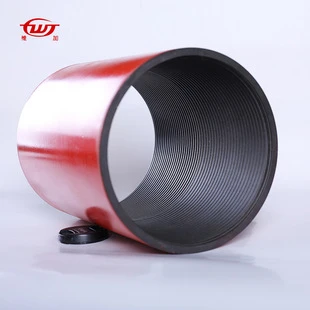- Afrikaans
- Albanian
- Amharic
- Arabic
- Armenian
- Azerbaijani
- Basque
- Belarusian
- Bengali
- Bosnian
- Bulgarian
- Catalan
- Cebuano
- Corsican
- Croatian
- Czech
- Danish
- Dutch
- English
- Esperanto
- Estonian
- Finnish
- French
- Frisian
- Galician
- Georgian
- German
- Greek
- Gujarati
- Haitian Creole
- hausa
- hawaiian
- Hebrew
- Hindi
- Miao
- Hungarian
- Icelandic
- igbo
- Indonesian
- irish
- Italian
- Japanese
- Javanese
- Kannada
- kazakh
- Khmer
- Rwandese
- Korean
- Kurdish
- Kyrgyz
- Lao
- Latin
- Latvian
- Lithuanian
- Luxembourgish
- Macedonian
- Malgashi
- Malay
- Malayalam
- Maltese
- Maori
- Marathi
- Mongolian
- Myanmar
- Nepali
- Norwegian
- Norwegian
- Occitan
- Pashto
- Persian
- Polish
- Portuguese
- Punjabi
- Romanian
- Russian
- Samoan
- Scottish Gaelic
- Serbian
- Sesotho
- Shona
- Sindhi
- Sinhala
- Slovak
- Slovenian
- Somali
- Spanish
- Sundanese
- Swahili
- Swedish
- Tagalog
- Tajik
- Tamil
- Tatar
- Telugu
- Thai
- Turkish
- Turkmen
- Ukrainian
- Urdu
- Uighur
- Uzbek
- Vietnamese
- Welsh
- Bantu
- Yiddish
- Yoruba
- Zulu
casing collar
Understanding Casing Collars in Oil and Gas Drilling Operations
Casing collars play a vital role in the oil and gas industry's drilling operations. As integral components of the casing system, they serve multiple purposes that enhance the overall efficiency and safety of drilling activities. Understanding their function, types, and applications can provide valuable insights into their significance in the drilling process.
What is a Casing Collar?
A casing collar is a thickened section of casing pipe designed to provide structural integrity and support within the wellbore. Typically constructed from durable materials such as steel, casing collars contribute to the vertical stability of casings and enable proper cementing processes. Their primary function is to create a reliable and stable environment for well operations, ensuring that the casing remains intact under the various pressures and temperatures encountered during drilling and production.
Types of Casing Collars
Casing collars come in several varieties, each designed for specific applications. The most common types include
1. Regular Collars These are the basic type of casing collars used in standard drilling operations. They provide support and stability to the casing, helping to keep the pipe in place.
2. Guide Collars Designed to assist in guiding the casing into the wellbore, guide collars feature a tapered design that helps facilitate easier installation.
3. Float Collars Installed near the bottom of the casing string, float collars play a crucial role during cementing operations. They prevent cement from returning up the annulus, allowing for effective sealing of the formation.
casing collar

4. Liner Collars Used in liner systems, these collars facilitate the connection between the liner and the casing string, ensuring a secure fit and preventing any leaks.
Each type of collar has unique characteristics tailored to meet the demands of specific drilling conditions, making them essential for successful operations.
Importance of Casing Collars
The significance of casing collars in drilling operations cannot be overstated. They ensure the stability of the casing, which is crucial for maintaining well integrity. Without proper casing support, the well could collapse, leading to costly repairs and potential safety hazards.
Additionally, casing collars aid in the cementing process. The success of cementing operations is critical for isolating different formations, preventing fluid migration, and securing the casing within the wellbore. This function not only protects the well but also enhances the overall efficiency of oil and gas extraction.
Furthermore, casing collars contribute to the management of downhole pressures. By providing a robust structure, they help control the wellbore environment, which is essential in reducing the risks associated with blowouts or other pressure-related incidents.
Conclusion
In summary, casing collars are indispensable components in the framework of oil and gas drilling operations. Their various designs and applications make them suitable for a range of drilling conditions, ensuring the structural integrity and safety of wells. As the industry continues to evolve with advancements in technology and drilling techniques, the role of casing collars will remain critical to optimizing the efficiency of oil and gas extraction while maintaining safety standards. Understanding their applications and importance helps appreciate the complexity and challenges faced in the drilling industry, underscoring the critical nature of these seemingly simple yet vital components.
-
Tubing Pup Joints: Essential Components for Oil and Gas OperationsNewsJul.10,2025
-
Pup Joints: Essential Components for Reliable Drilling OperationsNewsJul.10,2025
-
Pipe Couplings: Connecting Your World EfficientlyNewsJul.10,2025
-
Mastering Oilfield Operations with Quality Tubing and CasingNewsJul.10,2025
-
High-Quality Casing Couplings for Every NeedNewsJul.10,2025
-
Boost Your Drilling Efficiency with Premium Crossover Tools & Seating NipplesNewsJul.10,2025







